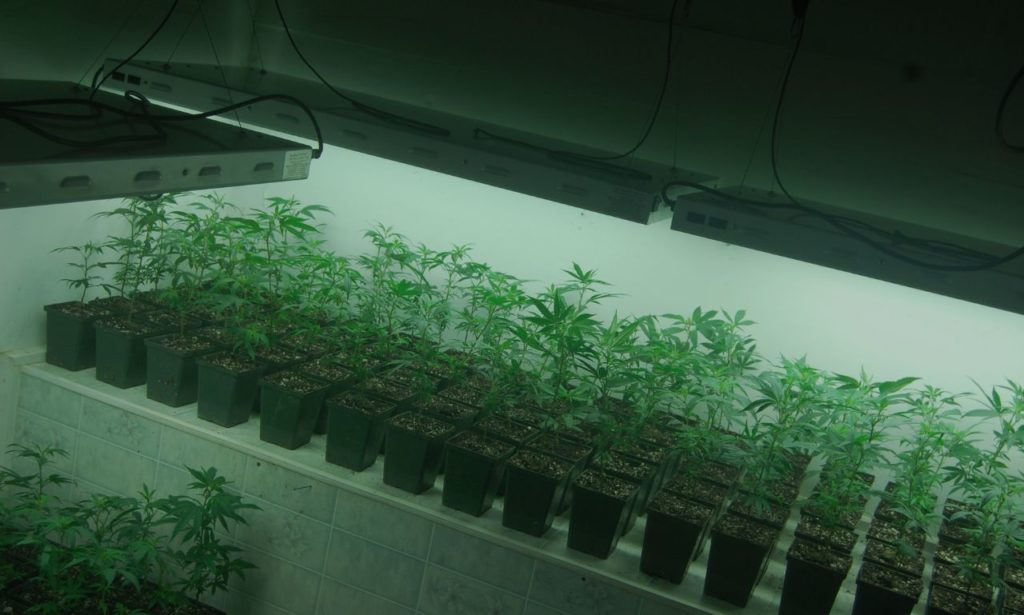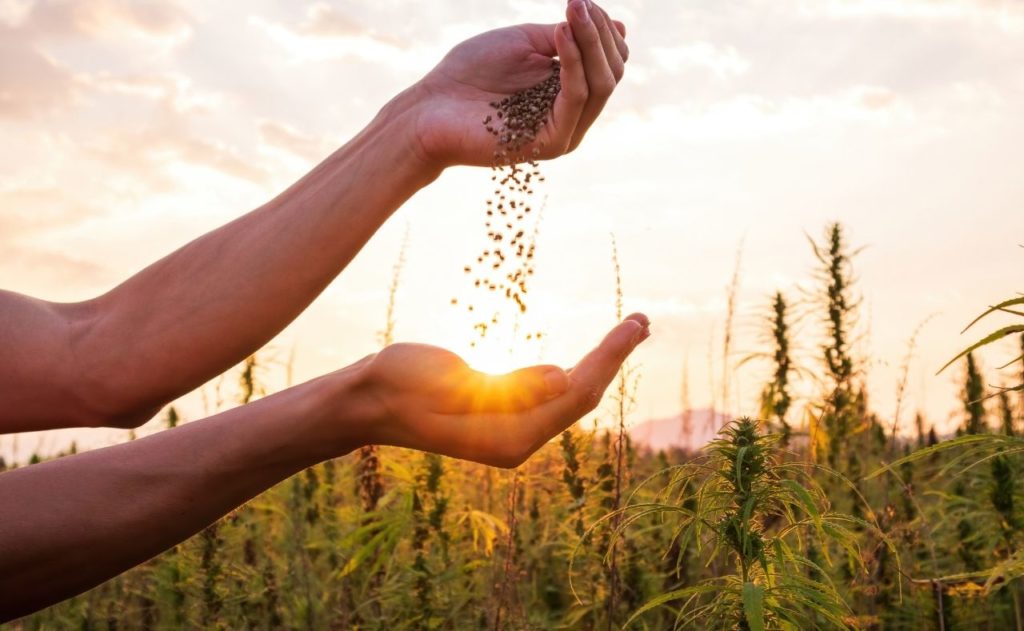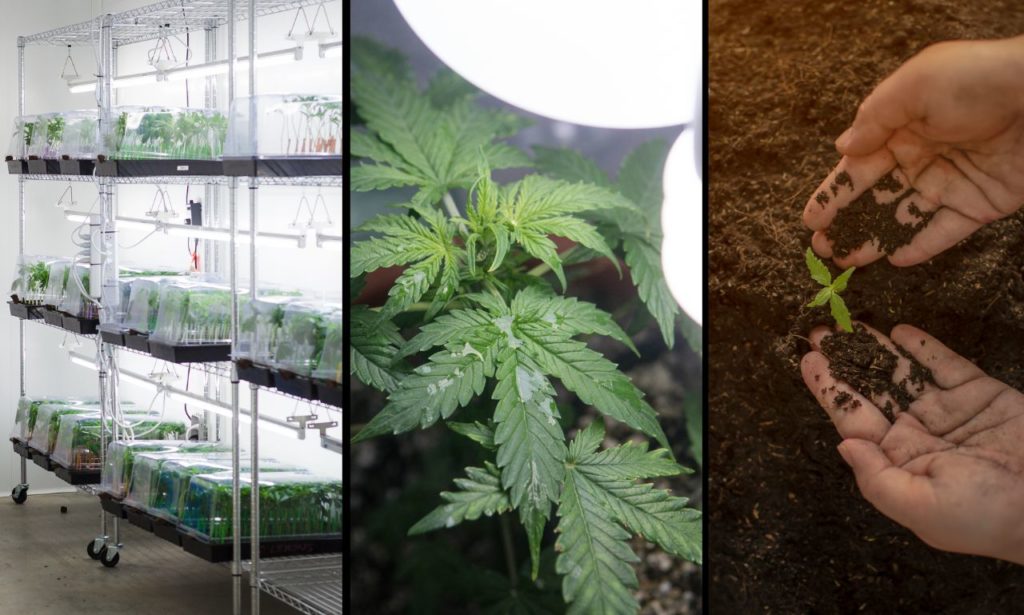Cloning cannabis is one of the most popular ways to produce a high-quality yield with ease and without having to take painstaking care. Whether you’re an established grower who wants to preserve just a small plant or you’re starting and want a complete clone farm, cloning your cannabis will drastically save you time versus started seeds. Now, if it’s so simple and easy, then why hasn’t everyone been cloning cannabis?
Cultivating cannabis might seem like a novel idea – but it’s not new. The history of cannabis farming dates back millennia. Our eyes are drawn to the lush beauty of these green plants in the field, for the simple reason that cannabis is an efficient plant that has survived in some form for centuries. But, does that mean it will flourish alongside modern methods? Will people start to see clone cannabis as an easy substitute for other plantings? Join us as we find out!
If you’re thinking about cloning cannabis, then this is the guide for you. We’ll take you step-by-step through the process, from picking the right plant to harvesting your clones. Whether you’re a cannabis beginner or an experienced grower, we think this will be a valuable resource! Hopefully, the information contained within these pages will assist you in growing healthy, top-quality clones of your favorite strains. This is something that has been a challenge for many growers and has led to unnecessary frustration. Nothing ruins a bud’s quality like unruly, weakly rooted clones. So let’s get started!
What is Cloning?
Plant cloning is a process of copying a plant exactly, from the rootstock up. There are many reasons why you may want to clone a plant. You may have a surplus of plants and want to preserve them or you may want to reproduce a specific phenotype of a plant. The important thing to remember when cloning plants is to use good quality materials and to follow the steps carefully. This will result in healthy plants that will grow and flower as if they were the original seed source.
Cannabis cloning is the process of taking a strand of cannabis DNA and transferring it to another cannabis plant. This essentially allows you to create a new cannabis plant that is genetically identical to the original. There are a few different ways to clone cannabis, but the most common method is through using a grow kit. These kits come with all the supplies you need to start cloning, including water, cells, and nutrients. All you have to do is follow the instructions included in the kit and you’ll be well on your way to creating your very own batch of cannabis!
About Marijuana Cloning

Cloning cannabis isn’t as simple as it may seem, which is why it can be daunting for that first starting out. One must recognize, however, that cloning is an incredibly important part of good genetics management. So, don’t rush in to take the plunge blindly and hope to get lucky with a high-yielding outcome!
If we’re going through the effort of cloning your plants, it’s important to learn your way around the process as much as possible so that you get the most out of every harvest. Following these steps will help you to get your high yielder(s) going! The most efficient method is via cutting: Lay your rooted females or females with male chromosomes on a flat surface such that their stems are bent upward. Applying a small amount of pressure on their sides with some scissors, lightly snip away. A fan-out technique is best for this step since it releases more branches from any given female, but only if rootlets are present. Otherwise, an undercurrent of growth in the stem area not only results in weak clones since used roots will also be carried over from one clone to another,
What Equipment will you need?
When starting to clone cannabis, you will need a few of the following items: crops – to clone the cannabis plant material, you will need to harvest its bud first
– to clone the cannabis plant material, you will need to harvest it bud first cloning tool – be sure to get a quality cloning tool, as this will make the cloning process much easier
– be sure to get a quality cloning tool, as this will make the cloning process much easier rooting medium – for rooting the cloned plants, you’ll need some type of soil or medium that can hold water and nutrients
– for rooting the cloned plants, you’ll need some type of soil or medium that can hold water and nutrients sterilization container – any type of Sterilization container (foil-lined pot, clean jar with lid) will do
– any type of Sterilization container (foil-lined pot, clean jar with lid) will do distilled water – distilled water is very important when cloning cannabis as it helps prevent mold and mildew from developing
As mentioned above, you’ll also need a few items related to growing cannabis crops: a grow light system – this is optional but can help increase yields and potency in clones by giving off more light to the clones as well as helping to promote vegetative growth in the original plant buds which will most likely be of flowering nature medium – for rooting your cuttings, you’ll need a medium that can hold moisture nearly permanently good compost – this is also not a necessity but if you want healthy root growth from your cuts, you’ll need some sort of growing soil or medium.
Rooting Cannabis Indoor or Outdoor?

If you are looking to clone cannabis for personal use, there are a few things to keep in mind. First, it is important to decide if you want to root your cannabis indoors or outdoors. Rooting cannabis indoors allows you to take advantage of the growing environment and ensures that the clones will be genetically identical. While rooting cannabis outdoors is possible, it may be more difficult to maintain a consistent environment and may require more maintenance. Ultimately, it comes down to personal preference as to which method is best for you.
Once you have decided whether or not to root your cannabis, the next step is to start acquiring your materials. You will need two pots: one large enough to hold your grow soil and another small pot for planting the seeds. You will also need a water bottle, pH meter, garden hose, trowel, hose spray, and gloves. Finally, you will need two male plants (or one female plant) and two female plants (or one male plant). Remember that cannabis grows best when grown in an alternating 12-hour light/dark cycle.
To begin cloning cannabis, prune off both of the male plants’ leaves so that they are only about 1″ long. This will greatly increase the efficiency of cloning a male plant. The next step is to carefully remove or pinch off several small leaves from every female plant you can find. The smaller the leaves are and the slower they grow, the more efficient this technique will be. Take two female plants and put them in a large clear plastic tub, ensuring that both are standing in water at all times. After one week, when it has reached maturity, cut off a leaf from each for use as your starters for cloning. Try not to cause trauma to either of them by cutting them too early since being transplanted too early often affects their flowering qualities. They should still be young enough so that you will have time to clone them as seedlings if necessary.
Taking Seeds or Pins

If you’re looking to clone cannabis, one of the first things you’ll need to do is choose a cannabis strain or variety to clone. Once you’ve decided on a strain or variety, you’ll need to begin cloning by taking seeds or pins. This method is easy and doesn’t require too much precision. All you need is a heat gun and some simple supplies. First, heat the seeds or pins until they are soft. Then, use a spoon to transfer the embryo into a new container. Make sure that the clone is well-watered and fertilized before planting it in the soil. Give it plenty of sunlight and water and watch as your cannabis grows!
Another way of going about this is by taking seeds or pins of the mother plant. To take a seed, you need to break the flower off of the plant and place it in a jar or container with moistened earth. You can then water the seed daily and keep it in a warm place. After about three weeks, the seed will have germinated and you can transplant it into the soil. For a pin, you will need to strip away most of the pistil from the flower and place it in a jar with moistened earth. You will then water the pin daily and keep it in a warm place. After about three weeks, the pin will have germinated and you can transplant it into the soil.
How Many Seeds or Pins You Should Try to Take Home?
Cannabis reproduction is not difficult, but there are some key things to remember to create healthy seeds or clones. If you’re growing for personal use, we recommend cloning three plants. If you’re growing for money, we recommend cloning six plants. Pure seed and bred clones germinate at a slower rate than those that were made in a commercial setting. In the case of most females, you will want to increase cloning frequency for her to take as many seeds or clones as possible. For exemplary results, you’ll need to start early with proper light cycles and ideal temperatures for growing.
The difference between a cannabis plant derived from a seed or clone is the genetic make-up (also known as genetics) of the resulting dried flower. Pure cannabis organically grown from traditional cannabis seeds is not recommended because it takes an extended time period before a final cured drug begins to form. Cannabis plants bred from seeds are not truly pure because some heterogeneous traits have been mixed during purification.
Choosing Your Mother Plant or Clones
When you’re ready to begin cloning cannabis, there are a few things you need to take into account.
First and foremost, you will need to decide what kind of clone you want – mother plant or clones. This decision is largely based on your intended use of cannabis. If you plan to grow your plants from the clone, then a mother plant is the best option. However, if you plan on using the clones as marijuana dispensary plants, then clones are the better choice. Clones have a higher resistance to stresses and pests, making them well-suited for commercial cultivation.
Once you have made your decision, you will need to find a source of donor female cannabis plants. As with any reproductive process, genetic variation is critical for success during cloning. Donor plants should be chosen from a variety of different phenotypes (or variations of a phenotype), providing as many genetic options as possible for your clones. freestyle cloning kits are often used by growers to create clones from mother plants. These kits involve taking cuttings from the mother plant, injecting them with rooting hormones, and then planting them in soil or water. After they have rooted, the cuttings can be transferred to new soil or water and begin to grow new plants. Some cannabis growers prefer the process of xenotransplantation, where cuttings are taken from a mother plant, stored at room temperature under darkness, then delivered to the soil that has been coated with rooting hormone and covered by an inverted paper cup with a small hole for water uptake. Once rooted, these cuttings may either be fed nutrient liquids or transplanted into pots.
Cloning vs. Growing and Fertilizing

When it comes to cannabis, cloning is a less expensive way to get started with cannabis cultivation, but it is important to note that there are slight differences between the two methods. For example, cloning requires a controlled environment while growing requires free-roaming plants.
It is also important to select the right strain for cloning if you are looking to create your line of cultivars. If you are using pre-built genetics, be sure to ask the breeder about the dosage rates for each component of the clone. Fertilizing for cloning should also be done differently than for growing, as the goal is not to produce large yields, but rather to produce strong plants that carry the desired phenotype. Clone Cultivars are genetically identical plants but can have a slight variation in appearance depending on their phenotype and gene expression. The line will continue to display the desired phenotype unless you choose to backcross it. Backcrossing allows you to create new types of genetics by back-crossing or selfing the selected branch. By crossing a clone with a stable parent stem, it produces an unexpected-looking offspring every time due to a random genetic mutation that is likely obtainable in most branches of the tree. You can achieve a specific color effect or change in height by creating your clones through backcrossing. It is important to keep this process as close as possible so that the characteristics do not become diluted when the mother plant no longer produces sexually, i.e., when sexual reproduction becomes impossible.
Conclusion
Cloning cannabis is a process that allows growers to create multiple “offspring” of the same strain of cannabis by taking cuttings from a mature plant and rooting them in water. By rooting the cuttings, clones will aggregate new cells which will grow into new plants similar to their parent. This article provided a step-by-step guide on how to clone cannabis, with images and full explanations for every stage of the cloning process. As you read through this guide, make sure to keep in mind that it takes time, patience, and skill to successfully clone cannabis; so start small if you want to try this exciting hobby!
